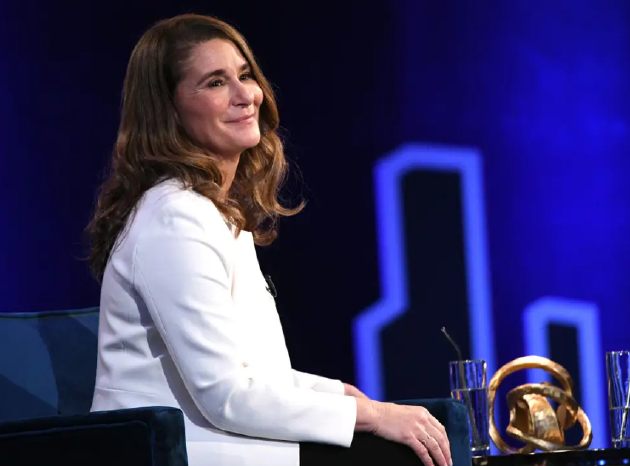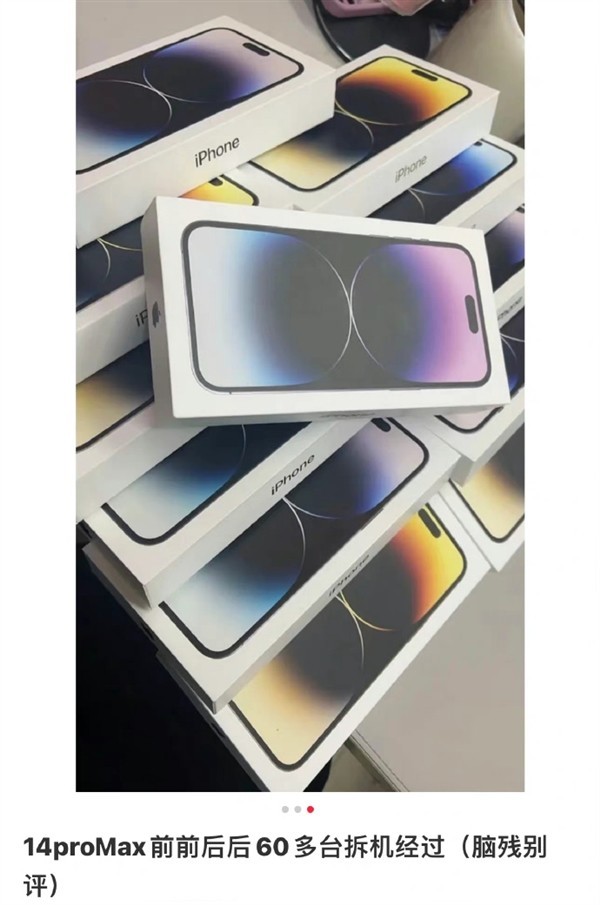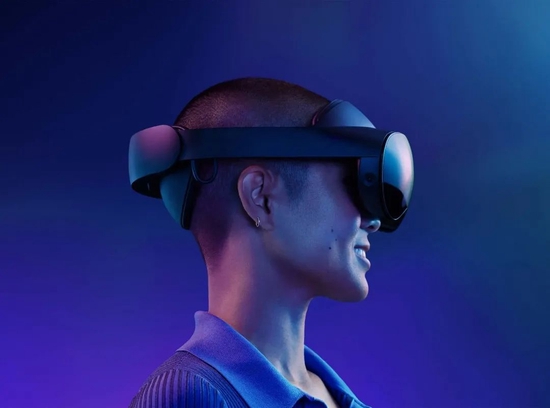your current location is:Home > TechnologyHomeTechnology
From building trams to robots: Musk wants to transform Tesla into an AI giant
This is a conference for the purpose of recruiting AI talents. Tesla used the most hard-core press conference to show its ambition to comprehensively transform the AI giant. Tesla will not only build self-driving trams, but also build truly popular humanoid robots, and open up its own machine learning supercomputer.
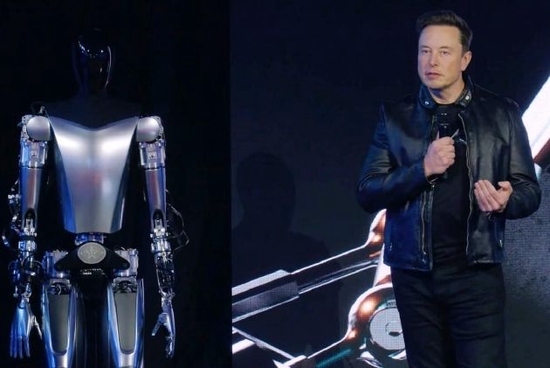
What kind of company is Tesla in? Auto companies, or new energy companies?
Those are the past tense, and in Musk's view, Tesla is now an artificial intelligence company. After the first quarter earnings report was released last year, Musk told analysts that in the long run, people will see Tesla as an AI company, rather than a pure car or new energy company.
Musk is the most staunch supporter of AI technology. Although it has caused some controversy, Tesla was the first to popularize the assisted driving function based on AI technology on mass-produced models, and used this as the main selling point of Tesla cars. The technological wave of new energy vehicles. Musk is also the earliest skeptic of AI technology, worried that unconstrained AI technology may have devastating consequences, so he co-founded the non-profit organization OpenAI in 2015 to develop and promote AI technology that benefits mankind.
On AI Day 2021 in September last year, Musk not only introduced the update of AI-based assisted driving systems such as FSD Beta and Autopilot equipped with Tesla cars, but also focused on the Tesla humanoid robot Optimus ("Transformers"). Inside Optimus Prime's name) project, and showed the concept modeling; in addition, Musk also revealed Tesla's in-house developed supercomputer Dojo chip for machine learning.
A year has passed quickly, and the AI Day 2022 held on September 30, Western Time, is the moment when Tesla handed over its transcripts in the field of AI. Marketing guru Musk has whetted the appetite of the outside world, constantly suggesting that Tesla will become a game-changer in the field of AI, and early robots are already in use in Tesla factories.
In January of this year, Musk said that Tesla will drive the improvement of the AI industry and help computers have the same capabilities as humans in the future. Although many experts believe that we may be decades away from this moment, we are used to exporting The arrogant Musk obviously thinks that the current research and development speed of the AI industry is too slow, and he will use his own speed to speed up the entire industry.
Musk even said that the application of Optimus to the industrial field can greatly increase economic output, virtually resolve poverty, and achieve universal basic income, thereby bringing "fundamental changes" to civilization as we know it. "Our goal is to make useful humanoid robots as quickly as possible, in mass production and at the lowest price possible.
It should be emphasized that the important task of this AI Day is to recruit talents in the field of AI, and most of the invited participants are tech giants in Silicon Valley. With a grand press conference to attract talents, Tesla has given full respect to the technical staff in the most hard-core way. The whole conference was also like a technical seminar. The technical R&D team introduced many technical parameters on the stage.
Although Musk has moved Tesla's headquarters to Texas, he has sold his California properties to avoid taxes, a move that has saved him billions of dollars in income taxes over the past year. But this AI Day 2022 is still held in Palo Alto, the heart of Silicon Valley. The Tesla AI Technology R&D Center remains in Silicon Valley, after all, it is the gathering place for global AI core technical talents.
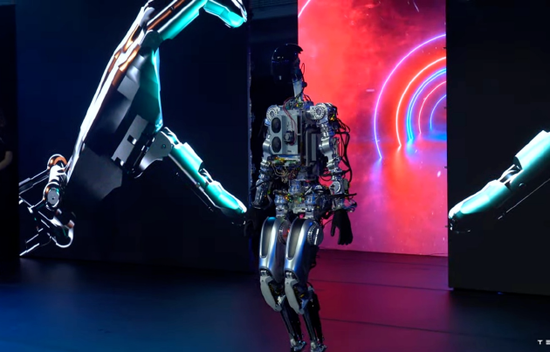
AI Day 2022 did not disappoint the tech talent. As Musk himself said, the significance of AI Day 2022 is to show the depth and breadth of Tesla's involvement in AI, computing hardware and robotics. Tesla not only released the commercial humanoid robot Optimus, but also announced more details of the machine learning supercomputer Dojo and more perfect FSD Beta assisted driving technology.
At the beginning of the conference, Musk directly let Bumble C, a humanoid robot without any control cables, come on stage and wave to the audience. This is a R&D prototype of Optimus, in order to better demonstrate its technology and design, the various parts and lines are not covered at all. Although the robot walks a little awkwardly and has a rather crude design, it is already in use at Tesla, helping to carry and deliver various objects.
In addition to Bumble C, Musk also showed off the first-generation Optimus robot. Although it is slightly different from the humanoid concept robot shown at AI Day last year, it is more cool. Tesla put the prototype Bumble-C on stage first because the Optimus can't walk on its own yet, but that issue is expected to be resolved in the coming weeks.
If it is only used as an industrial robot, there is no need for Tesla to develop humanoid robots, because humanoid robots require greater technical challenges and higher manufacturing costs than industrial robots, and the technical difficulty of bipedal walking alone is far more than that. Four-wheeled industrial robot.
Tesla designed the humanoid shape of Optimus based on human body structure, and its hands are also optimized bionic design based on human hands. Musk emphasized that the pair of robot hands in the AI Day poster is not a computer animation, but a real Optimus robot palm. This design means that Tesla robots will be used more for daily chores, even household chores.
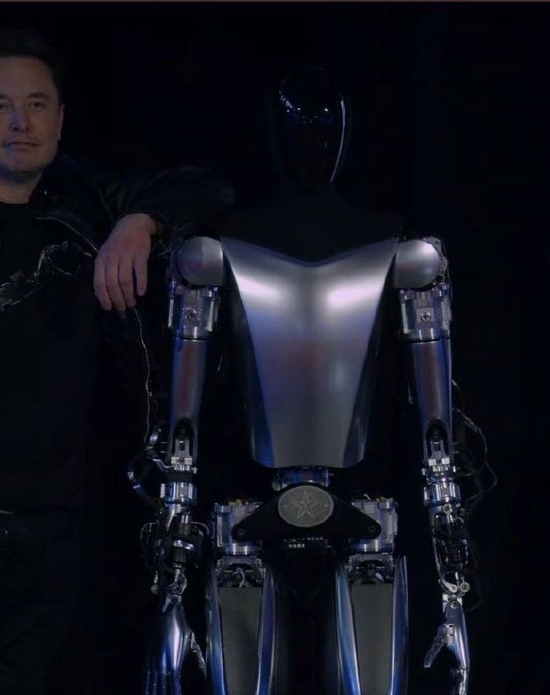
Musk said that the final production line will be the streamlined Optimus humanoid robot, and the Bumble-C is on stage just to show off the technology. However, marketing guru Musk said on Twitter that there will also be female humanoid robots in the shape of Catwoman in the future, leaving huge room for his audience to imagine. Master's fans even started designing the female robot for him.
The development of robots on the basis of electric vehicle giants is Tesla's biggest advantage over other robotics cutting-edge technology companies. Tesla uses its own housekeeping "three-electric technology" and the perception and prediction technology of the assisted driving system on the Optimus.
"Three electric technology" is the technological foundation for Tesla to lead the electric vehicle industry. The robot will be equipped with a 2.3kWh battery pack, which can meet the needs of a day's work. The power consumption is 100 watts while sitting and 500 watts when walking. The weight of the robot is equivalent to 73 kilograms of an adult man.
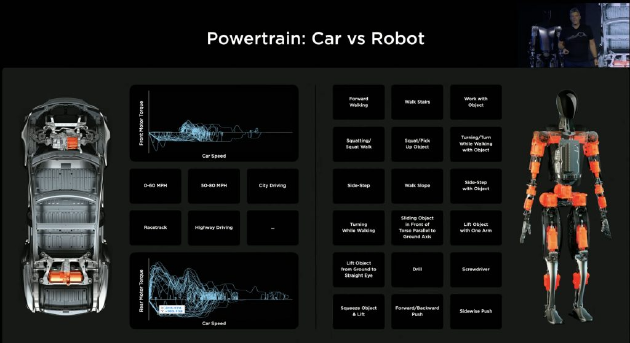
As Tesla said last year, the same AI technology behind Tesla's self-driving cars is also used on the Optimus robot. The camera-based computer vision perception and prediction technology will become the technical basis for the Optimus robot to walk and work.
The robotic hand has 27 degrees of freedom, and the whole body has 28 structural transmissions with more than 200 degrees of freedom. Musk emphasized that the robot can perform many of the heavy daily tasks, including lifting a half-ton grand piano. Then in the on-site answering session, he added that Tesla robots will also have the ability to understand natural semantics, conduct conversations with humans, and put safety first in design and development to ensure that robots will not cause harm to humans. "I am a big believer in the safety performance of AI".
Musk did not announce a specific mass production schedule for the Tesla robot, but said that it could be delivered within 3-5 years after opening pre-orders. Although he has previously revealed that he plans to start mass production of robots as early as next year, it is common for Tesla to delay mass production, and Cybertruck’s mass production delivery time has been delayed for several years.
Even more surprising to the audience, Musk said the Tesla robot could cost less than $20,000, which is less than the price of a Tesla car. This means that Tesla robots already have the basis for low-cost popularization. As a potential competitor, the Boston Dynamics robot dog is priced at $74,500. Regrettably, Google sold Boston Dynamics to SoftBank of Japan for $165 million in 2017 because it was not optimistic about the prospect of commercialization.
After watching AI Day, Liu Shaoshan, a technical expert in the field of autonomous driving, told Sina Technology that Tesla basically translated the technology stack of the car to the robot. It fully shows that the leading advantage of the technical architecture is that it can achieve dimensionality reduction and attack other categories through data accumulation and transfer learning. Moreover, Tesla's robots should have accumulated a lot of data in the factory, and further tempered in the digital twin platform. Digital twins can greatly improve training efficiency and speed, and make robot products land faster. Although the mechanical motor is not necessarily the strength of TESLA, it can be broken.
The second part of the conference is the progress of Tesla's FSD Beta self-driving technology (not fully autonomous driving). According to Tesla, 160,000 car owners in the U.S. and Canada already use the technology, a huge increase from 2,000 car owners last year.
Musk said that in the future, Tesla will expand the FSD Beta function to other markets according to the regulatory situation of various countries, but at least in terms of technology, it will be feasible before the end of this year. After several price increases, the FSD Beta's hardware price is $15,000.
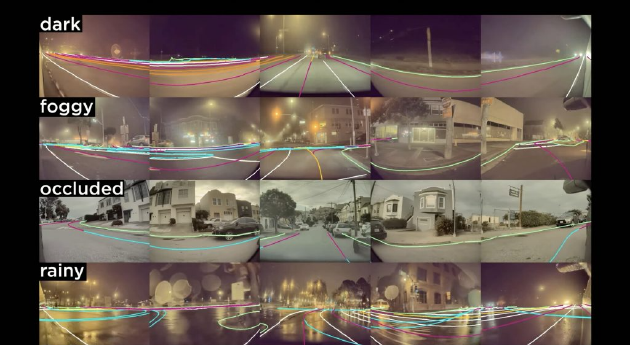
At the press conference, Tesla technicians introduced in detail how the Tesla FSD Beta technology models, maps, simulates, and predicts the data collected by the camera; this is obviously to show their own technology to many technicians in the audience Advantage. As we all know, Musk does not agree with the use of expensive millimeter-wave radar and lidar in autonomous driving technology, and Tesla’s new cars have also fully converted to computer vision technology. Compared with other autopilot technology companies that mix multiple sensor technology solutions, Tesla's choice undoubtedly puts forward extremely high technical requirements for its computer vision technology.
The supercomputer Dojo for machine learning is the final product released on this AI Day, and it is also another major product of Tesla's comprehensive entry into the AI field. Musk demonstrated the completely self-developed Dojo chip at AI Day last year, the purpose of which is to provide a supercomputer for machine learning training.
Tesla said that thanks to the super-computing power of the Dojo supercomputer, operations that would have taken months to complete can now be completed in just a week. At the press conference, Tesla technicians demonstrated the open source image synthesis software Stable Diffusion running on the Dojo supercomputer to simulate the use of Cybertruck and Semi electric trucks on Mars. This display attracted the exclamations of many technical experts in the audience. Obviously, they knew the technical content of Dojo best.
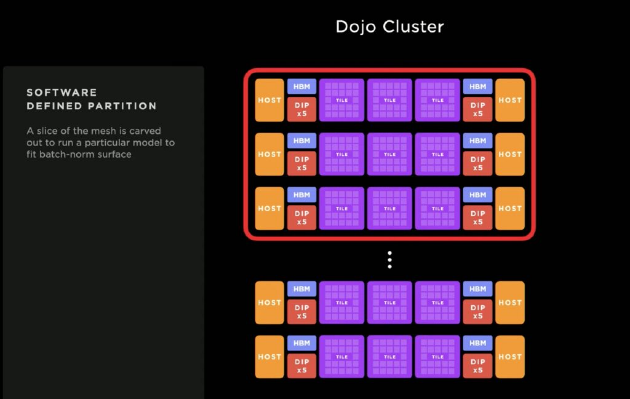
Tesla plans to build seven supercomputer clusters in Palo Alto and complete the first one by the end of next year, which is expected to significantly improve the automatic tagging capabilities of its AI work.
A Google AI technician who was invited by Tesla to attend the AI Day conference revealed to Sina Technology that Tesla's machine learning infrastructure is beyond imagination, and it is not inferior to Google. Moreover, he emphasized that Tesla can iterate two robots in one year, a speed that is rare in the industry. Obviously, this conference has moved the software programmer.
Although Musk is currently involved in a lawsuit with Twitter because he regrets buying Twitter, Musk has enough reasons to be arrogant when it comes to Tesla's business progress. In addition to handing in transcripts in the field of AI, Tesla has also made significant improvements in car building.
Tesla is about to announce its third-quarter vehicle production and deliveries. Analysts expect Tesla's global deliveries to hit a new high this quarter, with global deliveries reaching 350,000-370,000 vehicles. Tesla typically releases production and delivery figures for the previous quarter as soon as the new quarter begins.
In the second quarter of this year, Tesla delivered 254,700 vehicles worldwide, a year-on-year increase of 26.5% and a month-on-month decline of 18%. But the drop in deliveries in the second quarter was due to the shutdown of the Shanghai plant. Tesla produced 258,600 vehicles in the second quarter, significantly lower than the 305,400 in the first quarter.
According to media reports, global production of Model Y and Model 3 will increase significantly in the fourth quarter of this year as the production capacity of the Austin, Texas and Berlin, Germany plants increase, and the output will be close to BMW's level by the end of next year.
related articles
Article Comments (0)
- This article has not received comments yet, hurry up and grab the first frame~







